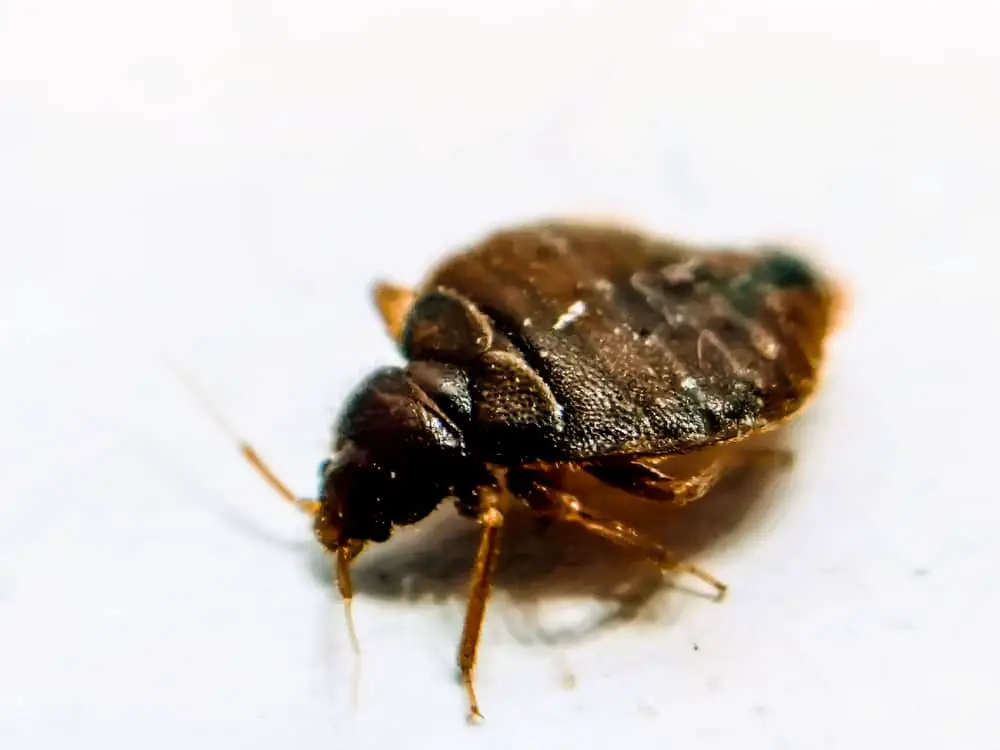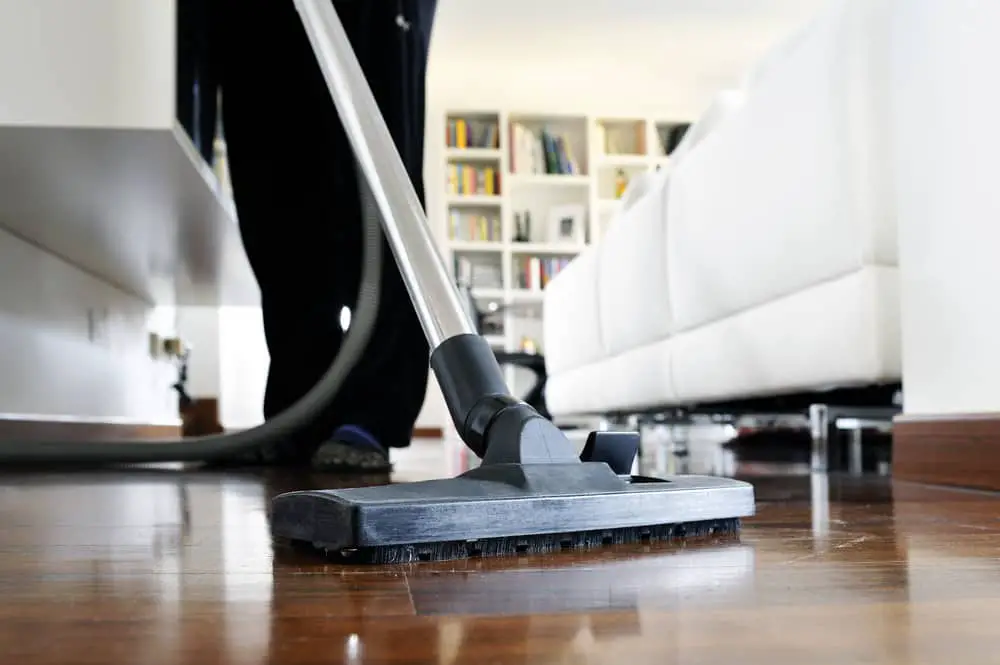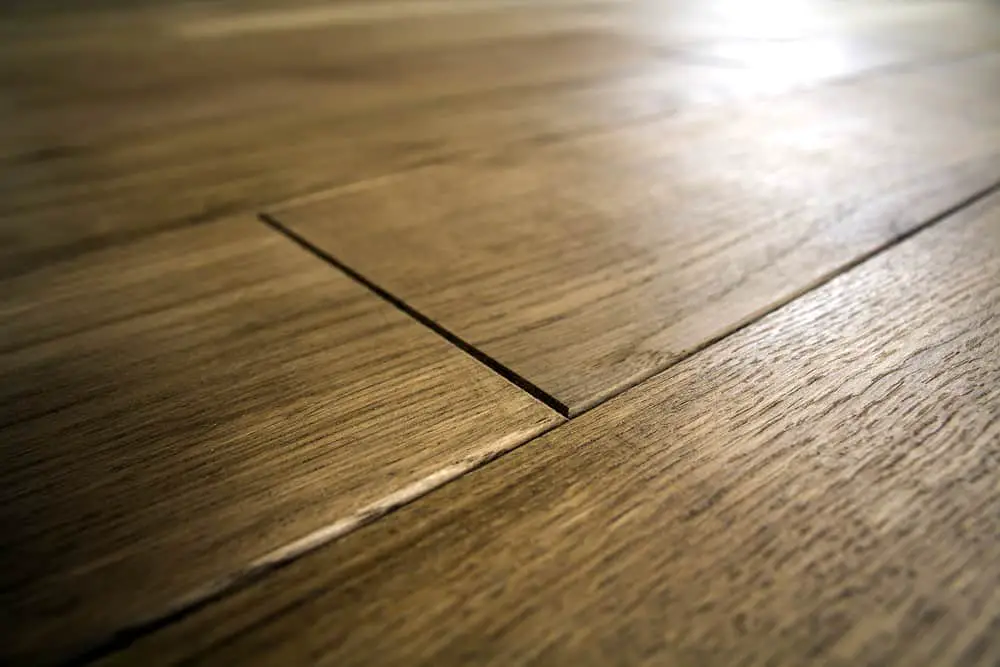Bed Bugs don’t just live in beds and mattresses and will crawl or lay eggs anywhere they can. It is common to find bed bugs on wood furniture and wooden floors as often as on cushions and carpets. A bed bug infestation isn’t limited to a bedroom, and other bed bug hiding places need to be treated to rid every piece of furniture from these pesky pests.
Since bud bigs cannot fly or hop and are only about the size of an apple seed, the question becomes how do they get around our homes? Hiding spots like old box springs and unfinished wood makes sense, but bugs in floor cracks crawling around like carpenter ants can be disturbing.
Any dark spot can be a hiding spot for adult bed bugs, but it is also important to pay special attention to bugs in hardwood floors and laminated tiles. They could be living there as well, and this article will give you the details you need to deal with it.
Is Laminate Flooring a Place Bed Bug’s Live?
Laminate flooring tends to be made of smooth plastics that don’t really give bed bugs a place to enter and lay eggs. If there are gaps, they are usually too small for a pregnant adult female to squeeze through. You will find more bed bugs in your bedroom hardwood floor than in your kitchen laminate one.
However, bed bugs will still crawl across laminate floors to find some of the things they need to survive. Depending on these factors, you may or may not have bed bugs living in your laminated flooring.

Access to Food
Bed bugs will go anywhere there is access to food. Since a blood meal is what these pests look for, pets that spend a lot of time on laminate floors in a kitchen or bathroom might attract a small infestation. If the floors are near gaps in walls, fabric like curtains or carpet, and furniture, they may live on or near your laminate flooring to stay close to fresh food.
Gaps
Wooden flooring often has gaps between the planks, which gives bed bugs a place to hide and lay eggs. A floor of wood is a natural environment for bed bugs, and if you have a bed over wood flooring, the chances of having bed bugs inside are even greater. Linoleum flooring usually has no gaps when it is first installed. Overtimes, tiles may chip, and gaps will appear, and then there is a chance bed bugs could slip underneath.
Adhesive
Like gaps, usually, when first installed, you should have no issues with bed bugs getting past the glue. If your flooring is in a location that has temperature fluctuations, then eventually, the tile may start to lift up and curl. If the adhesive has dried, then the bed bugs may be able to make it under, lay their eggs, and live around your laminate floors.
Cleaning Routine
Most of the chemicals we use to clean laminate flooring will also kill bed bugs and their eggs if they can reach them. If the floor is in an area where you clean regularly, there is less of a chance bed bugs will live there. Areas with linoleum floors that come in contact with bedding and have gaps in the walls or carpet, like a laundry room, could have a bed bug infestation that you are unaware of.
Surrounding Hiding Places
Carpets cracked walls, and furniture can all offer hiding places for bed bugs that live in laminate flooring. When you clean the surface flooring, some bugs may be able to flee and hide and then return to the infested floor when the chemicals evaporate. Although they are unlikely to cover the entire floor, it can be difficult to completely eradicate all of the adults and eggs and prevent future reinfestations.
Type of Floorings Bed Bugs Live On
Bed bugs like floors that they can get underneath and inside of. The deeper into a place a bed bug can hide and still have access to tasty snacks, the better. Gaps are easy to slip into, so any floor with slits between the slats is a good candidate for bed bug infestation. They also like places that are warm and safe to retreat to when danger approaches. Most importantly, the floor should have access to a food source readily available.
| Material | Reason | Treatment |
| Wood Floor | Gaps between slats and a porous natural material | Clean floors with hot water and wood polish regularly |
| Carpet | Fibers provide a good place for bed bugs to live and find food | Carpet steaming and regular vacuuming |
| Laminate | Kitchens, bathrooms, and laundry areas are good places for bed bugs to hide | Clean laminate with floor cleaner and spray pesticide in hard-to-reach places |
| Tile | Grout can wear down and open up hiding places for eggs and larvae | Bleaching bathroom tiles can kill any eggs and bed bugs inside |
Wood and Carpet
From day one, there is a good chance that wood and carpet will allow access to female bed bugs looking for safe places to lay eggs. Any access by furniture or bedding already infested with bed bugs can result in eggs and larvae infesting there are floor spaces. Areas with dog bedding, old worn-out furniture, and other fabric could already be contaminated with bed bugs that will hide in the safe zones these floor options provide.
Laminate and Tile
These areas of the floor may not be occupied by bed bugs easily. In order to accumulate enough bed bug traffic to infest these floor types, there would need to be prolonged contact with badly infested fabrics or materials. After such exposure then, bed bugs may be able to survive in and live on searching for food from the relative safety of their floor cracks.
For this to happen then, the materials that keep the floors sealed, like adhesives and grout, would have to deteriorate, which is unfortunately common as houses age.
Can You Kill Bed Bugs on Laminate Flooring?

While you may see bed bugs on laminate flooring, and a few may find a nesting place between the cracks, most of the time a bed bug spends on this type of floor will be transient. They may lay a few eggs or stay a few days, but the conditions of laminate flooring don’t offer the same safety as a mattress or carpet would. This kind of flooring also tends to change temperatures with the weather and lacks the mass to hold warmth.
As your laminate ages, there is a better chance bed bugs will lay eggs in the gaps, cracks, and lifted areas. If they can get inside and nothing threatens them, then you may get more bed bugs. Pets coming nearby and bedding coming into contact with the floor can also increase the likelihood of bed bug breakouts.
You can kill bed bugs on laminate flooring with most cleaning chemicals and pesticide spray or dust in cracks and crevices along the perimeter of the flooring. This is easier than treating carpets or hardwood flooring.


